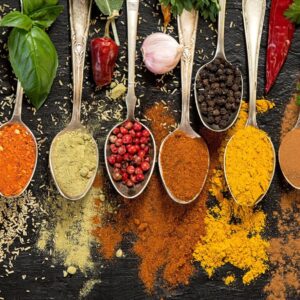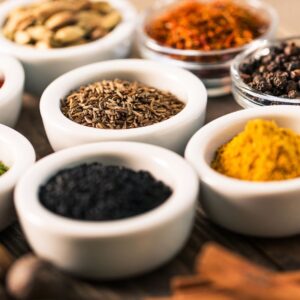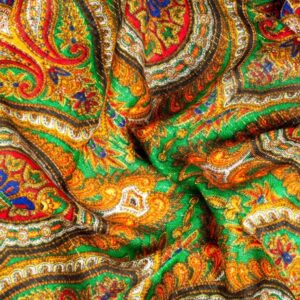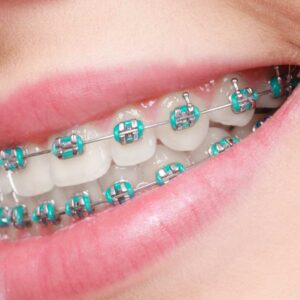Decoupage glue, also known as Mod Podge or collage glue, is a type of adhesive used to apply paper and other flat materials onto surfaces. It dries clear and provides a protective finish to the artwork. There are various types of decoupage glue available in the market, each with unique properties that cater to specific needs.
One type is the matte finish decoupage glue which gives a non-glossy appearance to the artwork and is ideal for rustic or vintage-themed projects. Glossy finish decoupage glue, on the other hand, creates a shiny effect on surfaces enhancing the look of bold colours and photographs. Another type is outdoor decoupage glue which is water-resistant and designed for long-lasting projects suitable for outdoor conditions.
When working with delicate papers like tissue or napkins, it is recommended to use soft brush-on decoupage glue since it minimizes wrinkles and tears. Fabric decoupage glue works well when attaching fabrics to surfaces such as lampshades or cushions. Sponge applicator brushes are perfect for large surface areas while fine tip applicators work well for detailed work.
Pro Tip: Before applying decoupage glue, always clean and dry the surface properly to prevent any bumps or bubbles from forming beneath the paper layer. Get ready to stick with me as we explore the adhesive world of decoupage glue.

What is Decoupage Glue
To understand the difference between matte, glossy, and satin decoupage glue, delve into the section about different types of decoupage glue. Learn the unique benefits and advantages of each sub-section, allowing you to choose the perfect decoupage glue for your crafting project.
Matte Decoupage Glue
A popular type of decoupage glue that many enthusiasts prefer is the Non-glossy Decoupage Glue. This adhesive has unique features that make it stand out from other types of decoupage glues available in the market.
- Matte Decoupage Glue dries to a non-glossy finish, making it ideal for projects that require a subtle and subdued look.
- It is easy to apply and can be used on various surfaces such as wood, paper, fabric, and plastic.
- This type of glue is water-resistant once it’s dried, making it ideal for tabletops, trays, and coasters that could be exposed to moisture.
- Due to its tackiness and ability to bond with surfaces efficiently, Matte Decoupage Glue can prevent wrinkling and bubbling when applied correctly.
- It can be mixed with acrylic paints to create unique shades instead of using a pre-mixed color palette.
Notably, unlike other glues used in decoupaging, Matte Decoupage Glue does not result in any glare or shine due to its non-glossy finish.
For optimal results while using this adhesive:
- Clean the surface you want to apply the glue onto before application.
- Use slow strokes when brushing the adhesive on for an even finish.
- To avoid bubble formation during application, use a brayer tool or another flattening instrument.
- Wait until one coating dries before applying the next layer if you require more adhesiveness.
- Store in a cool place away from direct sunlight for maximum longevity.
In summary, Matte Decoupage Glue remains an all-time favorite among crafters due to its simplicity in usage and versatility across different surface materials. It is an adhesive that keeps up to its promise of providing a matte finish while still creating a strong bond! Want your decoupage to shine like a diamond? Look no further than glossy decoupage glue, the perfect solution for adding some glamour to your crafting projects.
Glossy Decoupage Glue
Decoupage is an art form that involves decorating an object by gluing paper, fabric, or other materials onto it. To achieve a lustrous appearance of the decoupage design, various types of decoupage glue are used. When using a glossy decoupage glue, one can create a shimmering effect with their designs.
– Glossy decoupage glue has a shine to it – giving the surfaces after application a lustrous appearance.
– This type of decoupage glue is perfect for creating attractive and stunning designs that have both depth and texture.
– Additionally, with its high-quality gloss finish, it adds elegance and radiance to any completed project.
It is worth noting that when applying varnished Decoupage Glue onto workpieces, full focus should be set on avoiding bubbles and ridges.
A fun fact: To limit your chance of making mistakes when crafting with Decoupage Glue, you can use a skill guide or watch tutorial videos from experienced crafters such as HGTV.
Transform your plain object into a work of satin art with Satin Decoupage Glue – because everything looks better with a soft, silky finish.
Satin Decoupage Glue
Satin Finish Adhesive for Decoupage Crafts
Crafting is not complete without decoupage glue, and satin finish adhesive can make your craft project stand out. This type of adhesive offers a smooth, velvety finish, which can be perfect for creating a subtle appearance.
- It has a soft, satin-like sheen that adds elegance to the finished product.
- Satin decoupage glue works well on delicate materials like tissue and rice paper.
- The low-luster adhesive provides an even coat with no brushstrokes or bubbles.
- It dries transparently, so it doesn’t obscure the pattern of decorative papers used.
Notably, satin finish adhesive offers better water resistance than other types of decoupage glues. In crafting projects such as vases or centerpieces that may come into contact with moisture or damp areas, this type of glue is an excellent option.
For those who love aesthetic finishes in their craft items, satin finish adhesive can provide elegance to your work. According to The Spruce Crafts website, “Satin finish decoupage glue gives surfaces a soft and subtle sheen while adding durability.”
Choosing the right decoupage glue can be sticky business, but considering the factors can help you avoid a crafty disaster.

Factors to Consider When Choosing Decoupage Glue
To choose the perfect decoupage glue for your work, considering the right factors is crucial. In order to understand what type of glue will be best suited for your project, drying time, durability and availability and cost are some key considerations. Let’s take a look at the factors and how they can help you decide which decoupage glue to use.
Type of Project
When selecting decoupage glue, it is essential to consider the nature of your project. The type of project influences the kind of glue required as different projects demand varying levels of adhesive strength and finish.
- For paper-based projects, use a glue that dries clear without wrinkling the paper.
- When working on 3D surfaces, consider using a flexible glue that can bend without cracking or peeling away from the surface.
- If you plan on painting over your decoupage work, use a water-resistant glue that won’t dilute or bleed when exposed to moisture.
- Glass and ceramic pieces require a specially formulated glue that withstands high temperatures to prevent melting or slipping off.
- Metal surfaces need metallic finish glue made for these surfaces for long-lasting results.
Choose wisely as inappropriate adhesion will lead to unsuccessful and frustrating projects. Ensure that the unique details of your project align with your selected glue.
End up using appropriate decoupage glue that matches your project’s requirement by considering all factors crucially, getting satisfaction in every piece made.
Who needs a stopwatch when you can just watch paint dry? Unless you’re using decoupage glue, then you’re in for a much quicker thrill.
Drying Time
The time required for the glue to dry is an important consideration when selecting decoupage adhesive. The duration of drying time relies mainly on the formulation of the glue and the materials being attached. Different formulations have different drying times, so choose the one that suits your needs.
Some other details to consider are how sticky the glue feels after application, whether it sticks instantly or takes a while, and whether it turns yellow over time or not. These factors should also be taken into account when picking a decoupage adhesive.
In addition, take note of what kind of project you’re focusing on. If you’re working on something big or complex, select an adhesive with a longer drying time that allows you more flexibility and gives you more room for error.
There’s an interesting story behind this factor to consider when selecting decoupage adhesive. In ancient times, people would use animal-based glues like rabbit skin and fish byproducts to join and strengthen objects. However, animal-based adhesives were susceptible to humidity and became vulnerable over extended periods of time. Today, modern chemical formulas are used in crafting adhesives that guarantee robust longevity with quick drying times that meet specific requirements depending on each project’s distinct demands.
You want your decoupage project to last longer than a Kardashian marriage? Consider the durability of your glue.
Durability
For decoupage projects, the ‘Long-lasting Capability’ of glue is crucial. It defines how well a project will maintain its integrity. Here are some key factors to consider for the durability of decoupage glue.
| Factor | Explanation |
| Type of Base Material | The strength of adhesion depends on the surface type. Certain surfaces, such as wood and paper, require stronger adhesive than others. |
| Drying Time | If a glue does not dry quickly enough, it could compromise the project quality. |
| Paper and Medium Compatibility | The glue must correctly match with the paper and medium used in the project to create a durable bond. |






